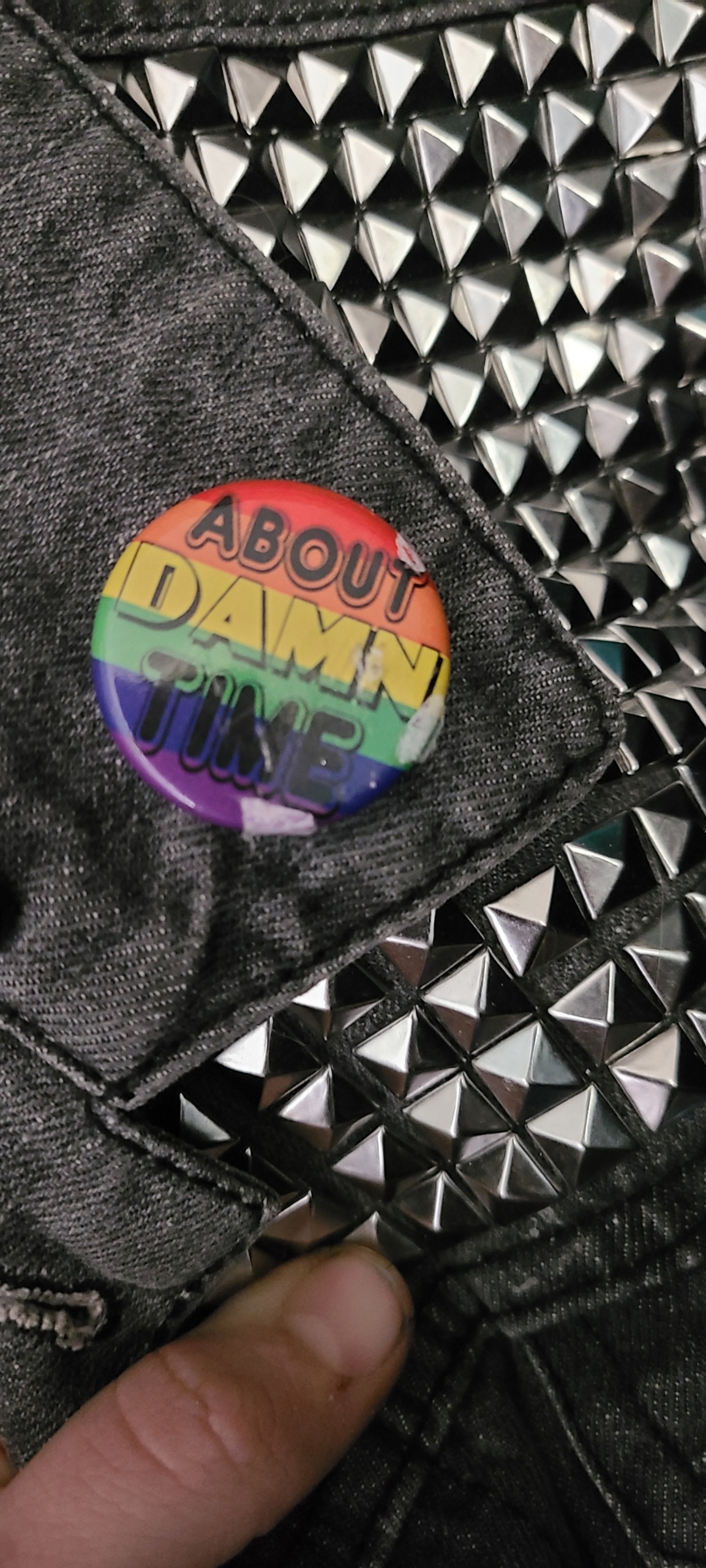Angry, Young, and Punk. What draws so many queer youth to punk rock and the counterculture?
By: Apollo Eliott
I started my sophomore year of high school in august of 2013, not long after the supreme court decision in United States v. Windsor ruled the federal government must recognize same sex marriage. This decision, along with Arizona’s on-going lgbt based anti-discrimination cases, became popular topics of debate on the school bus in the mornings. Shortly before school started that year, to celebrate the supreme court’s ruling, I had bought a small rainbow pin that said “about damn time” which I wore on my backpack. It didn’t take long for the kids on the bus to notice. Most of them were against the ruling and against any anti-discrimination policies that might protect lgbt people, so the attention drawn by my pin came with a price.
On the bus one morning in early September the debate started up once again. One student, a senior who had been very vocal about his hate, took aim at me. I had learned young not to fight back, that any attempt to defend myself would be seen as escalation, so when he started throwing trash at me, I didn’t react. In no time at all he had started a bus-wide chant of “kill the fag” but still I didn’t react. Once we arrived at school, I went to class pretending nothing had happened. Unfortunately for me, my friend who was on the bus with me that morning had not learned the same lessons I had. First thing after arriving at school, he went to the front office to report what had happened. About 10 minutes into my first class I was called to the office and told to take the pin off my backpack as it was “causing a distraction”.
Having been raised in a southern baptist church, I was already having a hard time coming to terms with my sexuality and this ordeal only made it worse. I had already grown up believing that there was something wrong with me and now just the existence of people like me was “a distraction”. Meanwhile, the students involved in throwing trash and chanting threats were not even spoken to about the incident.
I was angry and like many angry teenagers do, I turned to music. I put a random youtube playlist on shuffle, most of it was music I had heard before but one line caught my attention. The line was from Rise Against’s song Make It Stop, the song was inspired in part by the death of Tyler Clementi and several other teenagers who died by suicide after being bullied for being gay. The line that first caught my attention was “born free, but still they hate, born me, no I can’t change”. For the next hour or so I listened to that song on repeat, then I branched out into other Rise Against songs and eventually into other punk bands as well. A few weeks later I got my first denim vest to cover in pins and patches. The first addition was that small rainbow pin I had taken off my backpack.
Wearing that vest made me feel strong, not exactly invincible but more like it’s me against the world so I don’t care what you do. Punk fashion allowed me to dress androgynously and express my gender nonconformity years before I realized I was trans. Punk politics gave me a look into the injustices in the world that my conservative upbringing never showed me. And punk music gave me an outlet for how angry and betrayed I felt. As Laura Jane Grace, the transgender frontwoman of punk band Against Me!, says in her memoir “punk rock is not only a form of expression but a form of armor”. I felt the same way, wearing my anger on my vest felt like protection from a world I thought hated me.
For so many queer youth, like me, that what punk rock brings us. It’s a way to express ourselves. It’s protection from the world. It’s an outlet for our anger. And it’s a community of other punks who feel the same way. When you look at the number of queer punk rockers like Green Day’s Billie Joe Armstong, Against Me!’s Laura Jane Grace, and Pansy Division’s Jon Ginoli and Chris Freeman its easy to see why see many queer youth are drawn to the punk rock counterculture.

